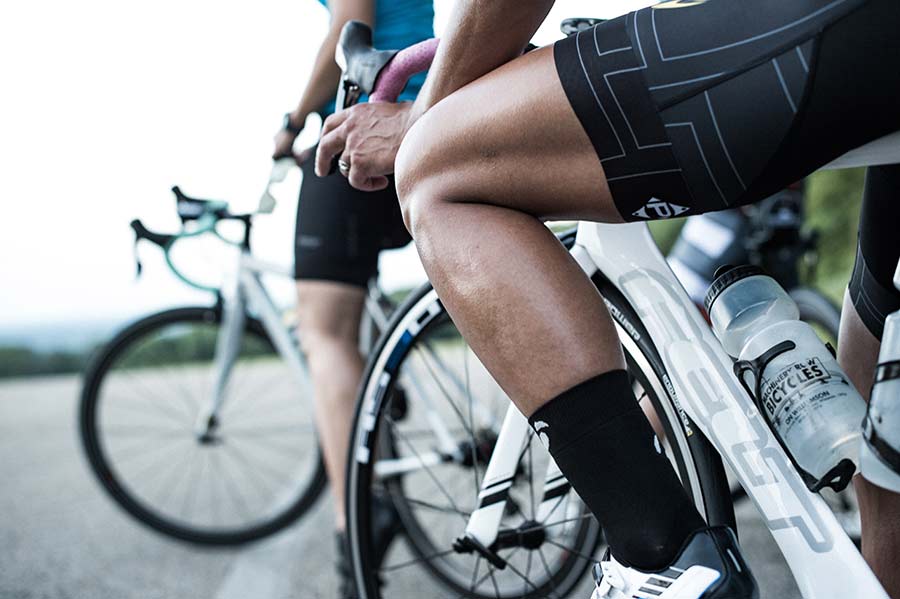By: Gordy Paulson, USAC Level 1 Coach
Training and racing a bike changed profoundly as power measurement became a feasible, economical option. Tools such as the P1 pedals or the iconic hub-based power meter placed data in the hands of cyclists that revolutionized the way they train. But, having the capability to accurately measure power on a bike should not mean that you leave your heart rate monitor at home.
Evolution of the use of heart rate monitors and, eventually, bike power meters by cyclists created some controversy over the relative importance of the two technologies. Arguments can be found supporting each as the “best” way to train.
This, I believe, misses the point, and misses an important opportunity. Relative importance of data obtained from either technology should not be determined by comparison to the other. That would be like arguing whether engine RPM's or speed is the better datum to look at to guide a Formula 1 racecar driver around the track. Certainly speed is critically important…go fastest and you win. But if, in the pursuit of speed the engineers were to ignore engine stress (for this point, RPM's), the speed might come to Zero MPH when the engine is over revved. Consequently, engineers need to monitor and understand both as well as the relationship one to the other.

The same can be said for cycling power and heart rate. The important concept to keep in mind is that both power meters and heart rate monitors are tools for training. The data captured by each of these devices combined with knowledge of the significance of the data can assist an athlete to achieve higher levels of performance.
While riding, a cycling power meter will accurately report a rider's output. More output almost always translates to more speed. And more speed usually leads to better performance. In the search for improved performance the use of power meters to set targets, training zones, measure capability and judge improvement are the gold standard. In my opinion the power meter is the best available training tool for accomplishing these goals.
However, there are some things that a power measurement cannot tell a rider. A heart rate monitor can provide insight into how your body is reacting to training and racing stress. Additionally, heart rate monitors can be used to perform a number of valuable training tasks which cannot be accomplished by watching watts. These tasks include:

1. Pacing time trials, the bike leg of a triathlon or longer climbs.
In steady state, 'threshold' efforts, use your heart rate monitor to maintain output at a level where your heart rate stays at, or just below, threshold. In training, having a power meter to monitor training targets for these situations is indispensible. At times you may not reach your power goal, but the effort achieves the desired training effect.
However, there are times, such as in competition, where you need to know that you can go the distance. A heart rate monitor can provide insight into the “governor on the engine”. There is a heart rate that each cyclist cannot exceed and sustain for a 40k time trial. The rider who has access to heart rate data for the effort probably knows what that is as a result of targeting a power number and then discovering it was not sustainable.
Additionally, that power number might be a “best day” number. What about days where the race is at altitude, the racer is dehydrated a bit, or over tired, or getting sick? In these instances, having an understanding of the heart rate limit attainable for the duration of the effort can be the difference between finishing or floundering.
2. Alerting you to possible oncoming sickness.
Watch out for times where the heart rate seems too high for the wattage.
There have been a number of instances when I've observed an athlete with an unusually elevated heart rate from a workout. Then the athlete came down with some type of illness has followed this a few days later. The elevated heart rate was a warning sign for oncoming illness.
Knowing this I've been able to alert athletes to take extra precautions to avoid or reduce the impact from getting sick when heart rate and wattage didn't follow expected trajectories.

3. Showing training improvement evidenced by quicker HR reductions.
Make a habit of checking your heart rate immediately following hard efforts and check it again over the next couple of minutes.
One of the first things I notice as fitness improves with training is the way heart rate drops after hard intervals. Taking a heart rate reading right after the end of a hard interval, and then taking it again 1, 2 and 3 minutes later and comparing the numbers to what was observed earlier in the year will often show a pronounced reduction in the amount of time an athlete's physiology needs to return to a rested state. This helps confirm that training is on track.
4. Confirming you're recovered and ready to proceed with the next interval.
When the interval requires your strongest effort, use heart rate to signal when you are ready to repeat the effort.
Some intervals are best done when your body is ready to do another effort (as compared to intervals done deliberately before your body has fully recovered). Heart rate can provide the necessary information to monitor this point.
Similarly to point number 3 above, it makes sense to take a heart rate reading immediately following a hard interval, and then again until you see that your heart rate has returned to a level consistent with your readiness to perform another interval. For example, when your heart rate has returned to the “Active Recovery-Zone 2” level you are likely ready to do another hard effort.
5. Confirming that you're over tired and, perhaps, should take an extra rest day.
Watch for heart rates that either do not come up to an expected level based on experience, or come up to a level greater than expected. Another possibility is the heart rate that progressively increases during a steady state effort and never flattens out. Most riders who have trained for awhile will experience workouts where the power numbers just don't seem to correlate to their perception of how hard they are working (“Perceived Exertion”).
Having heart rate data to match up with these perceptions makes it possible to identify training that might be done while over tired. Perhaps this workout is occurring at a time when doing the workout won't accomplish the training goal. When your heart rate just won't come up to a level that you expect for the power level target you have a pretty good indicator that you are carrying extra fatigue. If that's not part of your training plan, it might be best to get extra rest.

6. Monitoring resting heart rate to identify when more rest is advisable and help avoid overtraining.
Make a habit of checking resting heart rate daily. Resting heart rate is one of the personal metrics which is often advanced as a daily check. As you train and become more fit you should experience a diminished resting heart rate. Over a longish period of training, watching this happen can be motivating. However, there may come a time when the usually low resting heart rate is higher than you expect. If this continues it may indicate that your training has reached a volume or intensity level that is beginning to be too much.
7. Providing data which, when combined with power data for the same effort, gives greater insight into the physiological costs of the effort.
When analyzing power data, combine heart rate data to gain deeper insight into your training efforts and physiological response. Utilizing software, such as WKO4 or PowerAgent, coaches and athletes are able to drill down into combined data to evaluate how each interval, series of intervals, workouts and races impact the rider.
This level of review can look at the physiological cost measured by heart rate as well as the output in watts. Armed with this knowledge future training or race strategy can be designed to seek the output and control the cost.
Heart rate monitors and power meters each provide important data that can be utilized to guide training and racing. Independent of each other these devices are good to use, but limited. Combine the two, learn what the data means, and you can dramatically improve training and racing.

Gordy Paulson is a USAC Level 1 Coach. He has coached athletes to National Championships and, as a former Category 1 Road Racer has claimed a number of National and State Championships. Gordy is a Master/Elite Coach with Peaks Coaching Group.
